Posts Tagged: caterpillar
They Didn't Get the Memo
They didn't get the memo. Summer is over. Fall is underway. Winter is coming (Dec. 21). But the Gulf Fritillaries (Agraulis vanillae) are still...
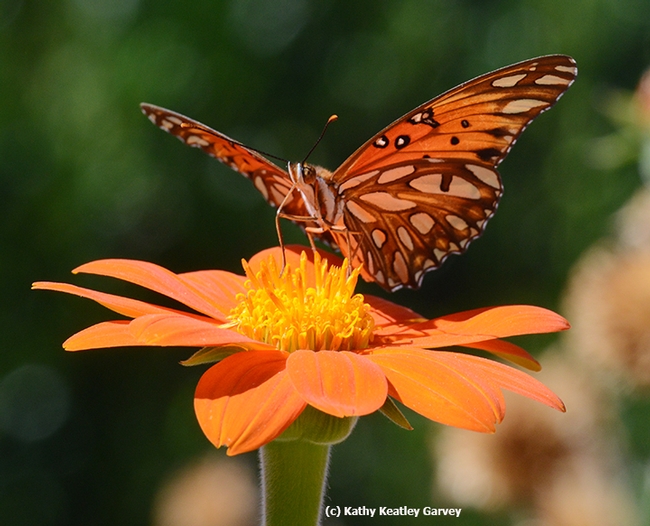
Gulf Fritillaries are still flying--and mating and laying eggs--in November. This one is nectaring on Mexican sunflower (Tithonia). (Photo by Kathy Keatley Garvey)
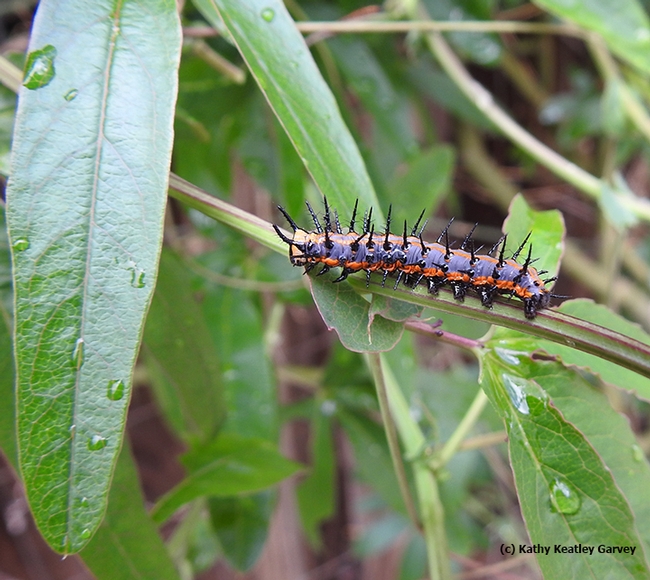
A Gulf Fritillary caterpillar in November. (Photo by Kathy Keatley Garvey)
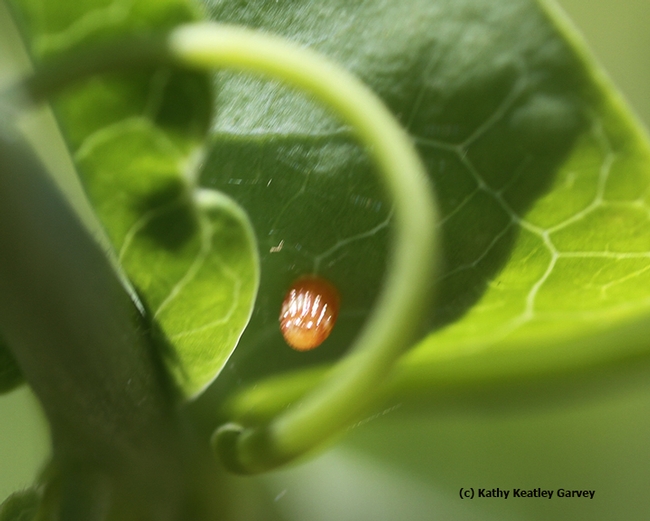
A tiny Gulf Fritillary egg. The egg is about the size of a sesame seed. (Photo by Kathy Keatley Garvey)
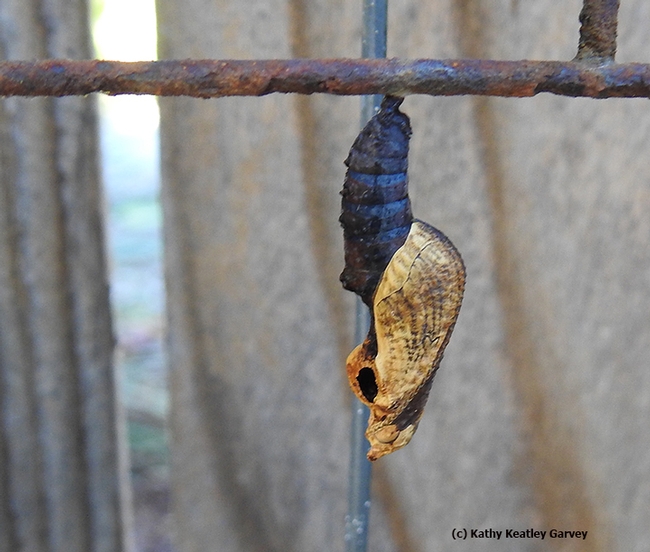
No Gulf Fritillary will ever eclose from this chrysalis. Note the parasitoid hole. It was a large parasitoid--a big tachinid fly or an ichneumonid or wasp--says Art Shapiro, UC Davis distinguished professor of evolution and ecology. (Photo by Kathy Keatley Garvey)
The Unseen World of Gulf Fritillaries
Let's celebrate the Gulf Fritillary (Agraulis vanillae). If you have a passionflower vine (Passiflora) in your yard, you've probably seen these...
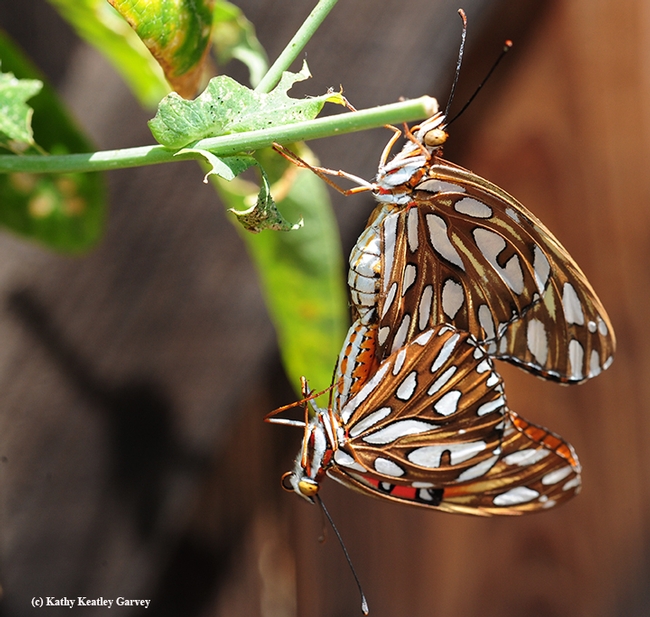
Gulf Fritillaries mating in the passionflower vine. (Photo by Kathy Keatley Garvey)
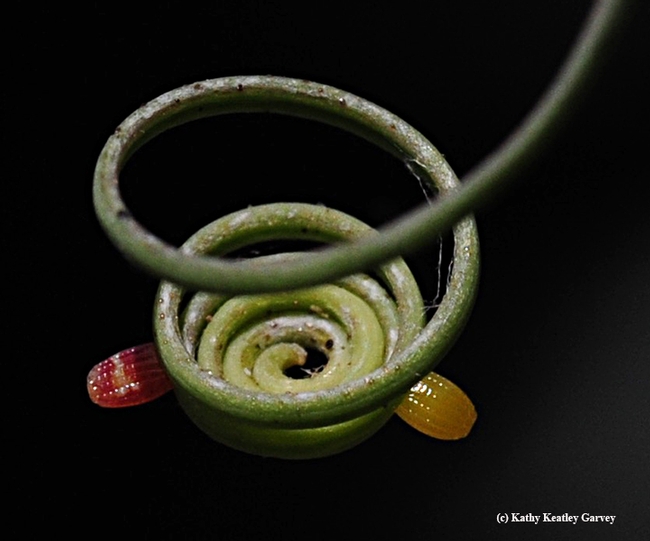
A newly laid Gulf Frit egg (on right) and an older Gulf Frit egg on the left. The egg is about the size of the period at the end of this sentence. (Photo by Kathy Keatley Garvey)
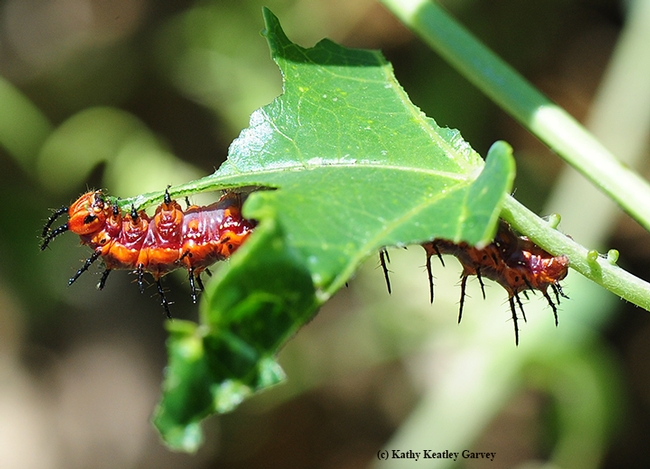
A hungry caterpillar getting its fill of passionflower vine, Passiflora. (Photo by Kathy Keatley Garvey)
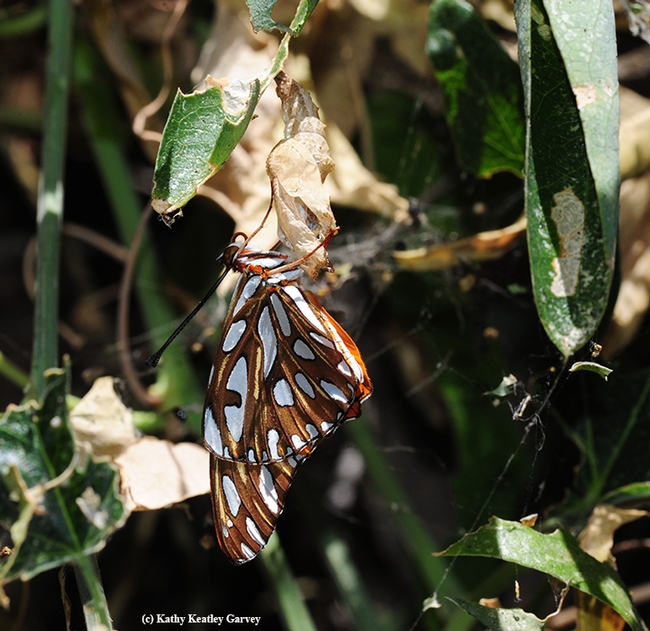
A newly eclosed Gulf Fritillary hangs onto its chrysalis. (Photo by Kathy Keatley Garvey)
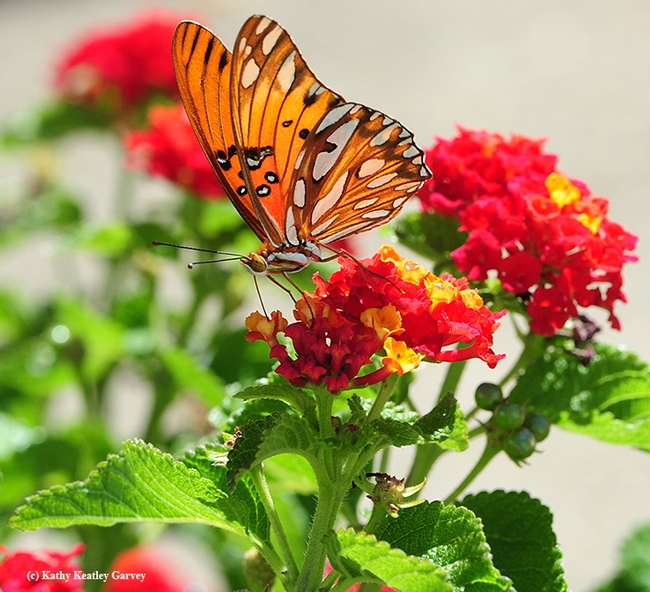
A Gulf Fritillary, Agraulis vanillae, sips nectar from Lantana. (Photo by Kathy Keatley Garvey)
The Saga of the Milkweed, Bee and Caterpillar
So here's this tattered old worker bee seeking some nectar from the broadleaf milkweed, Asclepias speciosa. She looks as if she's not only been...
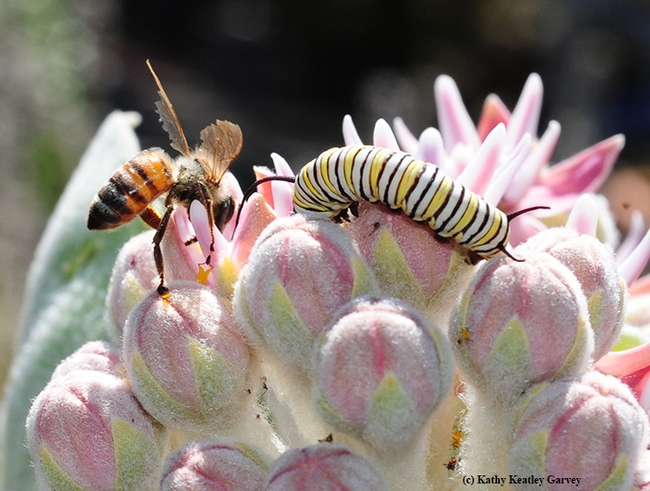
A tattered honey bee seeking nectar from a milkweed blossom encounters a monarch caterpillar. (Photo by Kathy Keatley Garvey)
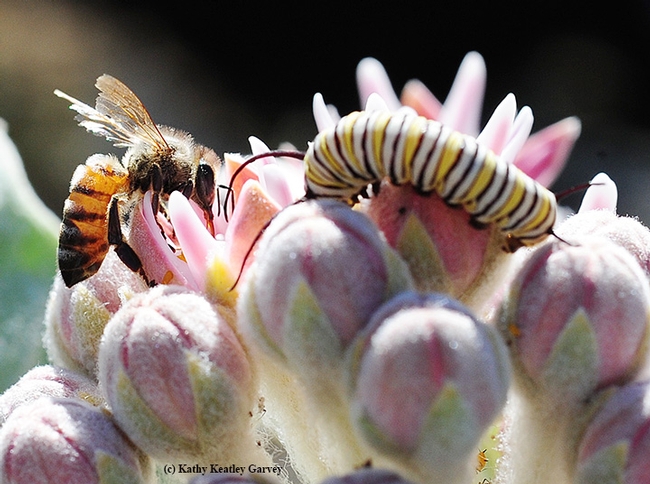
"Well, hello, there!" The antennae of the bee and monarch caterpillar touch. (Photo by Kathy Keatley Garvey)
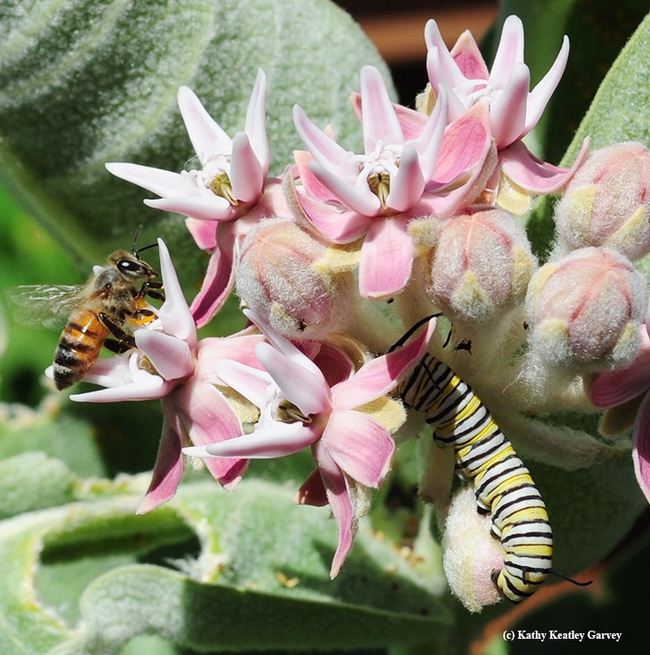
A honey bee gets stuck in the sticky pollinia of the milkweed as a monarch caterpillar keeps munching away. (Photo by Kathy Keatley Garvey)
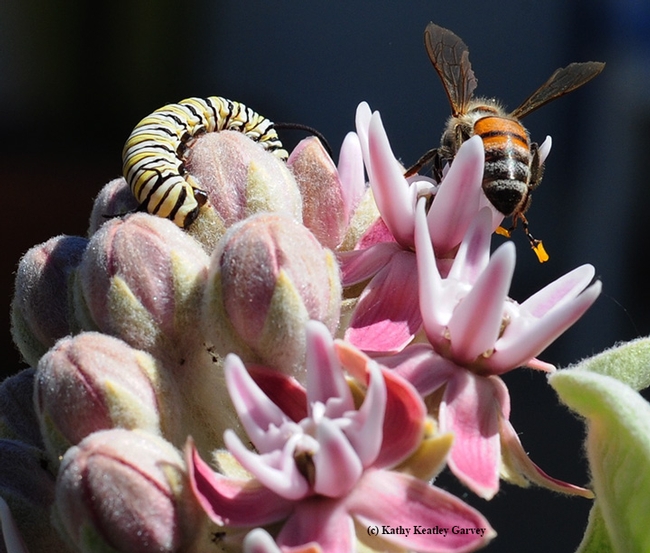
Honey bee carries the sticky winged pollen on her leg as she buzzes off. (Photo by Kathy Keatley Garvey)
Happy Father's Day!
Where have you been? For the last several weeks, we've been watching for signs of the first seasonal monarch caterpillar on our narrow-leafed...
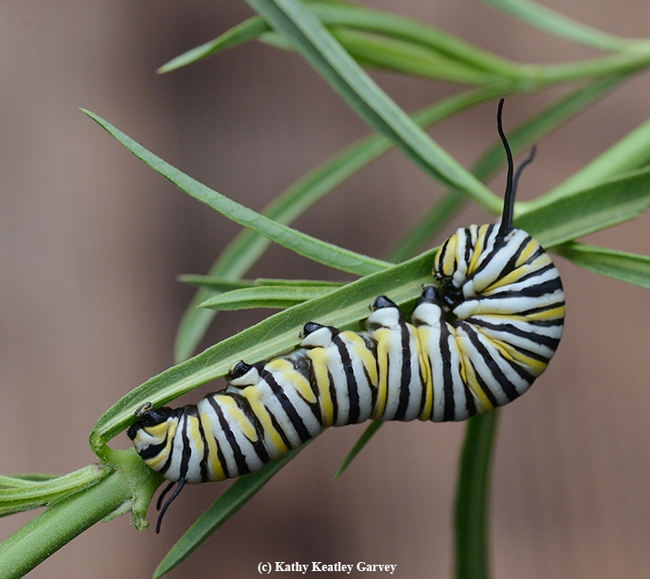
A monarch caterpillar chewing on a narrow-leafed milkweed. (Photo by Kathy Keatley Garvey)
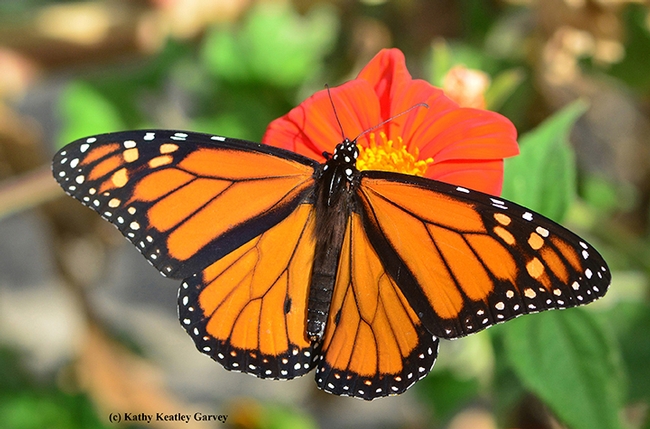
A male monarch butterfly on a Mexican sunflower (Tithonia). How can you tell it's a male? Note the distinguishable black spot on each hind wing. (Photo by Kathy Keatley Garvey)
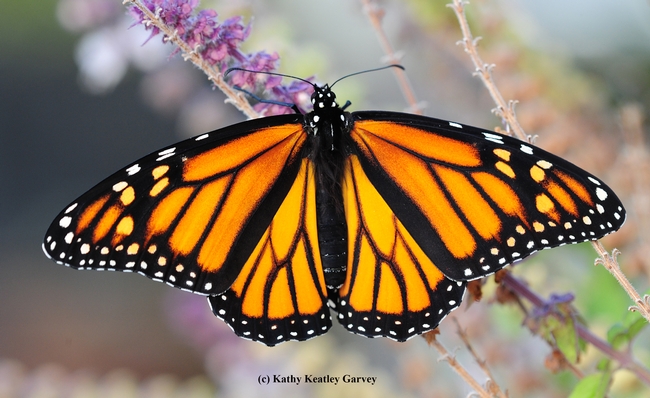
A female monarch butterfly on lavender. Note the absence of the black spots on the hind wings. (Photo by Kathy Keatley Garvey)
Feuding, Bigamy and Tunneling: Hear About The Eccentric Life of Entomologist Harrison Dyar
Former Smithsonian entomologist Harrison G. Dyar, noted for his research on moths and butterflies, was not your typical entomologist. He feuded with...

Entomologist Marc E. Epstein researched, wrote and published "Moths, Myths and Mosquitoes: The Eccentric Life of Harrison G. Dyar, Jr."

